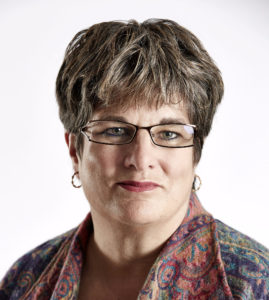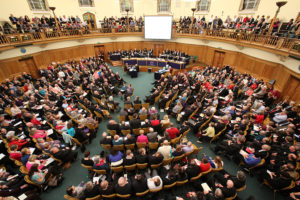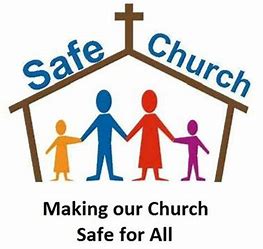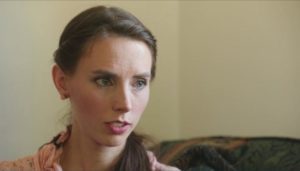
 I have just finished reading two books which coincidentally were published recently on a similar topic. Both books, Undivided and Just Love are by women who ‘came out’ as homosexuals in the setting of a strong personal evangelical belief. There are other strands which link the books. Both women were subjected to exorcism. Each of them is a highly educated articulate individual, educated at Oxford and Cambridge respectively. By the world’s standards they have enjoyed success and achieved a great deal within their professional lives. A further theme links these works written by Vicky Beeching and Jayne Ozanne. That is the importance and love of music. As testimonies of two Christian women passing through the trauma of coming out to acknowledge same sex attraction, they are powerful accounts of cultures and theologies clashing. Both were brought up as conservative Christians, Vicky a Pentecostal and Jayne an evangelical Anglican. No reader can finish these works without having their attitudes affected by listening to their stories. Church people, conservative and liberal alike will be helped to understand more deeply the issues that exist on both sides of a deep chasm of misunderstanding.
I have just finished reading two books which coincidentally were published recently on a similar topic. Both books, Undivided and Just Love are by women who ‘came out’ as homosexuals in the setting of a strong personal evangelical belief. There are other strands which link the books. Both women were subjected to exorcism. Each of them is a highly educated articulate individual, educated at Oxford and Cambridge respectively. By the world’s standards they have enjoyed success and achieved a great deal within their professional lives. A further theme links these works written by Vicky Beeching and Jayne Ozanne. That is the importance and love of music. As testimonies of two Christian women passing through the trauma of coming out to acknowledge same sex attraction, they are powerful accounts of cultures and theologies clashing. Both were brought up as conservative Christians, Vicky a Pentecostal and Jayne an evangelical Anglican. No reader can finish these works without having their attitudes affected by listening to their stories. Church people, conservative and liberal alike will be helped to understand more deeply the issues that exist on both sides of a deep chasm of misunderstanding.
The freedom of this blog enables me not to attempt a formal review of these books. I have the option simply to comment on aspects of the women’s stories which strike me most forcibly. In each of the narratives the authors record how much personal suffering was involved in having feelings that they knew were unacceptable to family and church. Vicky eventually publicly acknowledged her homosexuality only in her late 30s. On the way her growing awareness of the nature of her feelings had resulted in depression, loneliness and suicidal episodes. Also, the stress of keeping her sexuality private caused a nervous breakdown and a serious psychosomatic illness. This put her out of circulation for over a year. At this point she was working among Christian congregations in the States as a successful singer/composer. Her contract with the publishing company that was her sponsor required her to uphold Christian standards and this of course precluded any hint of same-sex attraction. Scandal of any kind had to be avoided at all costs on the part of someone who publicly proclaimed her faith in the front of huge crowds. The strain of knowing that her true identity was other than that on public view eventually proved too much. Her public self-identification as gay that burst out was for her a crucial moment in the recovery of her mental and physical well-being.
Jayne’s story also narrates a coming out and this story includes its own periods of darkness, emptiness, loneliness and despair. Being a member of an institutional church, the Church of England, did allow Jayne the possibility of finding some sympathetic individuals to support her. Vicky, on the other hand, having been a life-long member of Pentecostal congregations had virtually no one to turn to when times were hard. Meanwhile Jayne was moving in the highest circles of church life, being a member of the Archbishops Council. This meant that she got to know all the leaders of the Church of England as well as all the prominent evangelical Anglicans. When she finally announced her gay identity, the response to her was typically one of silence. The ambiguity of such silence has troubled her as she did not know how to interpret it. Vicky on the other hand has met (and continues to meet) with raw vitriol and words of hatred.
When Vicky announced her homosexual identity to the world in a newspaper interview back in 2014, I wrote about it on this blog. I had never heard of Vicky until that point, but it was clear that this announcement was of some importance in the world of evangelical and independent churches. Vicky records in her book how almost immediately she was brought face-to-face in a Channel 4 television interview with the notorious Scott Lively, an American homophobic agitator. He had been responsible in part for the anti-homosexual legislation in Uganda. Lively had also written an outrageous book called The Pink Swastika: Homosexuality in the Nazi party. Channel 4 wanted to maximise two contrasting points of view. Lively trotted out the old assertions that the gay identity was a chosen path which could be overcome by prayer and the power of God. Same-sex relationships were like addiction to drink or drugs.
The correspondence and emails that Vicky received after her emergence as gay were of two kinds. The first group thanked her sincerely for enabling them as individuals to acknowledge their own sexual identity while remaining Christian as Vicky was doing. The second group had mined the Old Testament for passages which expressed the way God punished those who worshipped idols or chose a life of sin. Worse still were the conversations she had with Christian friends and former colleagues. Instead of the love, welcome and easy friendship she used to enjoy there was an element of distance and distrust. Religious bookstalls stopped stocking her products and tour promoters no longer invited her to take part in Christian festivals. The world she had occupied professionally and socially for 15 years shut her out and left her out in the cold.
We have discussed before on this blog the way that the gay issue has become such a defining issue among conservative evangelicals. Only in the past few days the GAFCON conference in Jerusalem has divided the Anglican church into those who do and those who do not accept the conservative understanding of gay marriage. Other issues like the ordination of women and the possibility of divorce (clearly forbidden by Jesus!) are fudged or left to one side. The conservative Christian world, (and we are not of course just talking about Anglicans) which sung Vicky’s music until her coming out, now forbid it as though they might be contaminated by singing it. The theological and practical implications of such a mind-set are boggling and too extensive to explore here.
Both Vicky and Jayne address in their writing the theological implications of same-sex attraction. Vicky with an Oxford degree in theology gives the reader a simple but helpful guide to all the relevant texts. She also expounds simply the exegesis that exists to show how many of the proof texts against same-sex attraction are at best ambiguous. From the nature of the ‘sin’ of the men of Sodom to the meaning of Paul’s strange word in the first chapter of Romans, the reader is introduced to the complexity of discovering the biblical message about sexuality. To be able to say, ‘the Bible clearly teaches’, is clearly impossible from both their testimonies. Far more clearly ‘unbiblical’ in nature are the words of hate and threats of violence that both women, particularly Vicky, have endured. In condemning Jane and Vicky, these opponents are functioning apparently without any reference to the Bible’s teaching about love. It is indeed hard to see how the Christian faith can ever be promoted by the encouragement of threats or sheer malign hatred. Such things continue to exist within the orbits of the Christian church. They are a stain on the integrity of the church’s reputation. Perhaps these books which both promote Christian love, albeit of an unconventional kind, will do more to get to the heart of the Christian proclamation which is offered to a sad and sometimes mixed-up world where hate and division are so commonly found.
http://survivingchurch.org/2014/08/19/the-vicky-beeching-affair/ for earlier comments about Vicky’s story.






